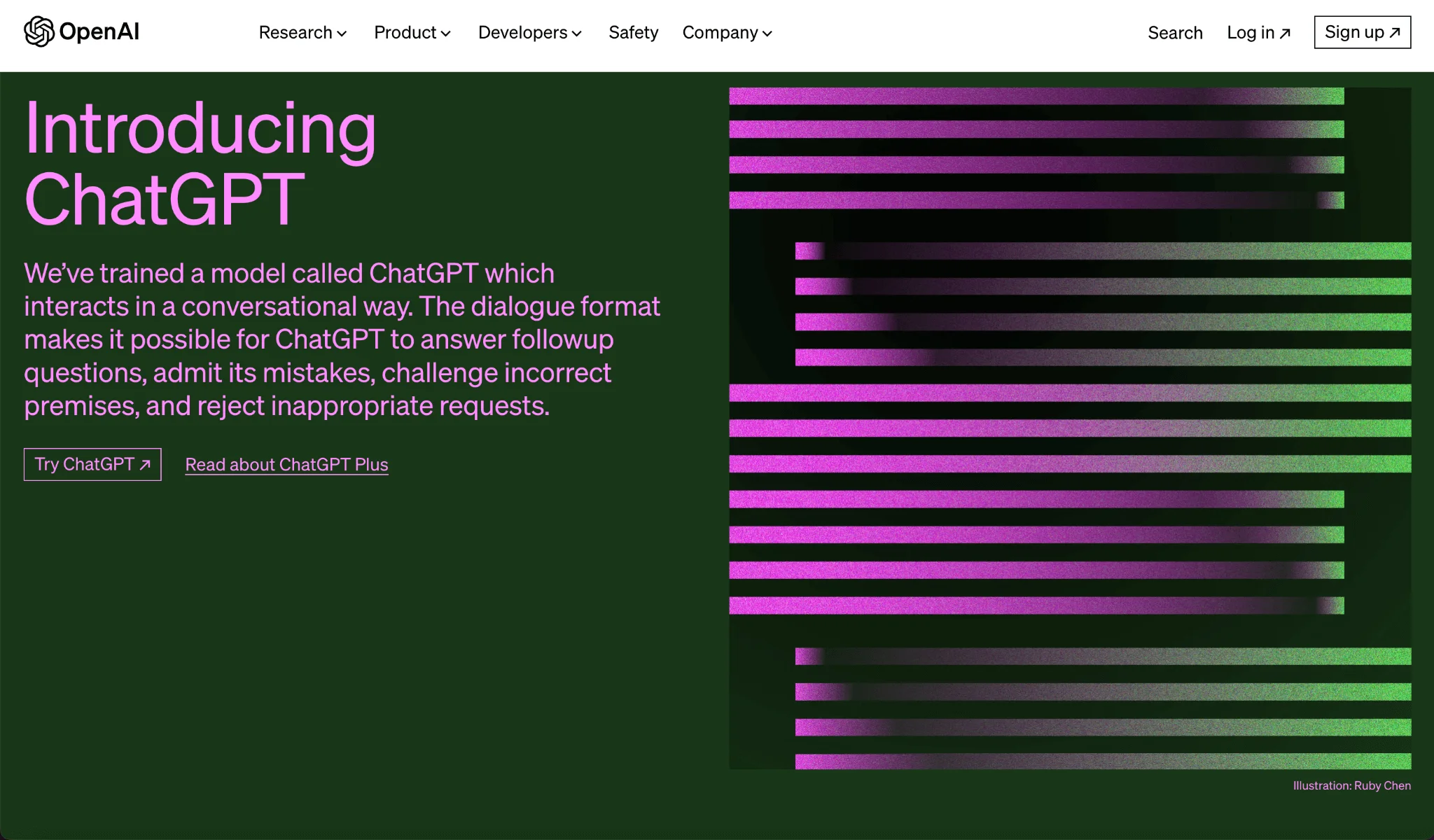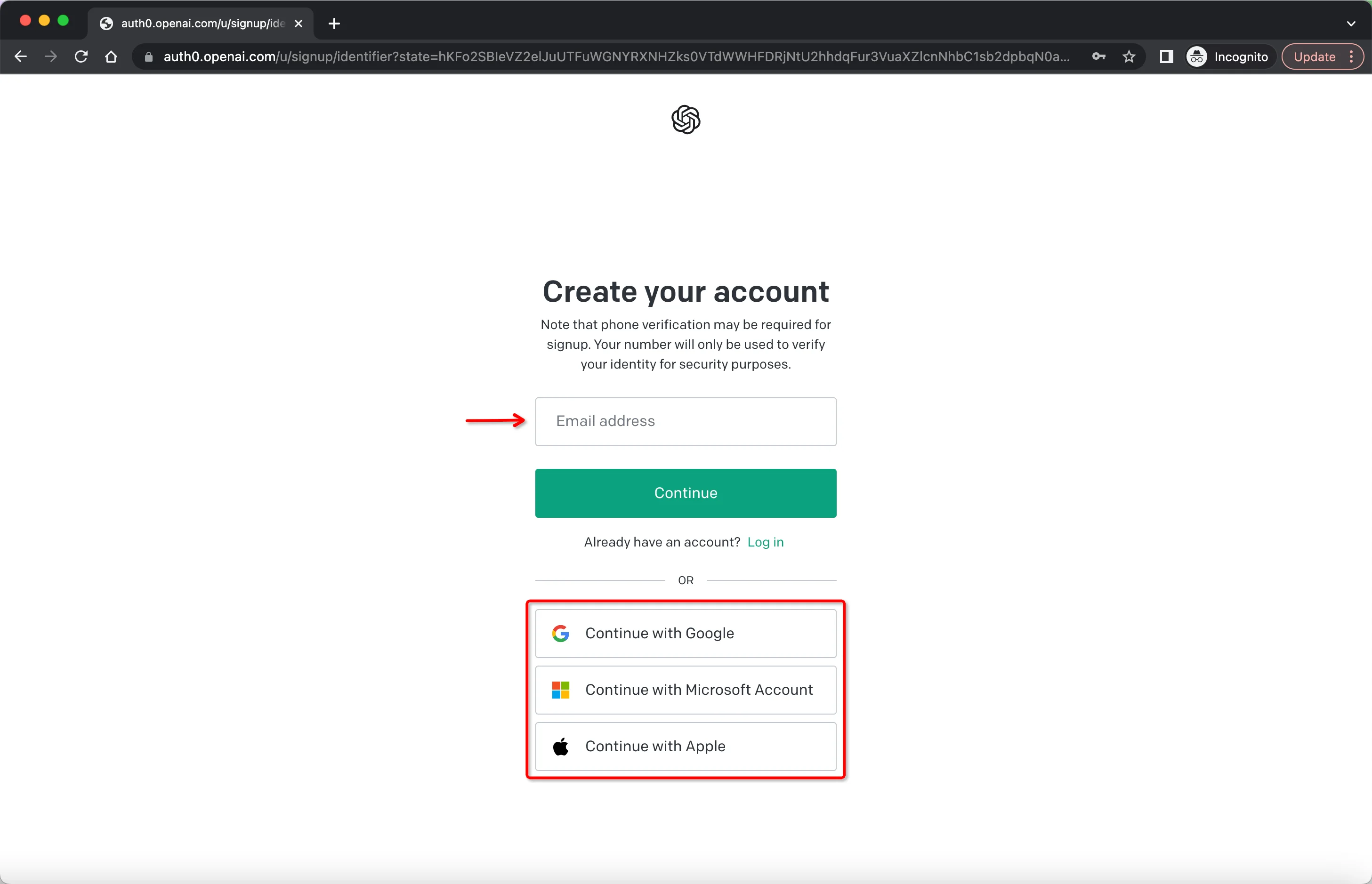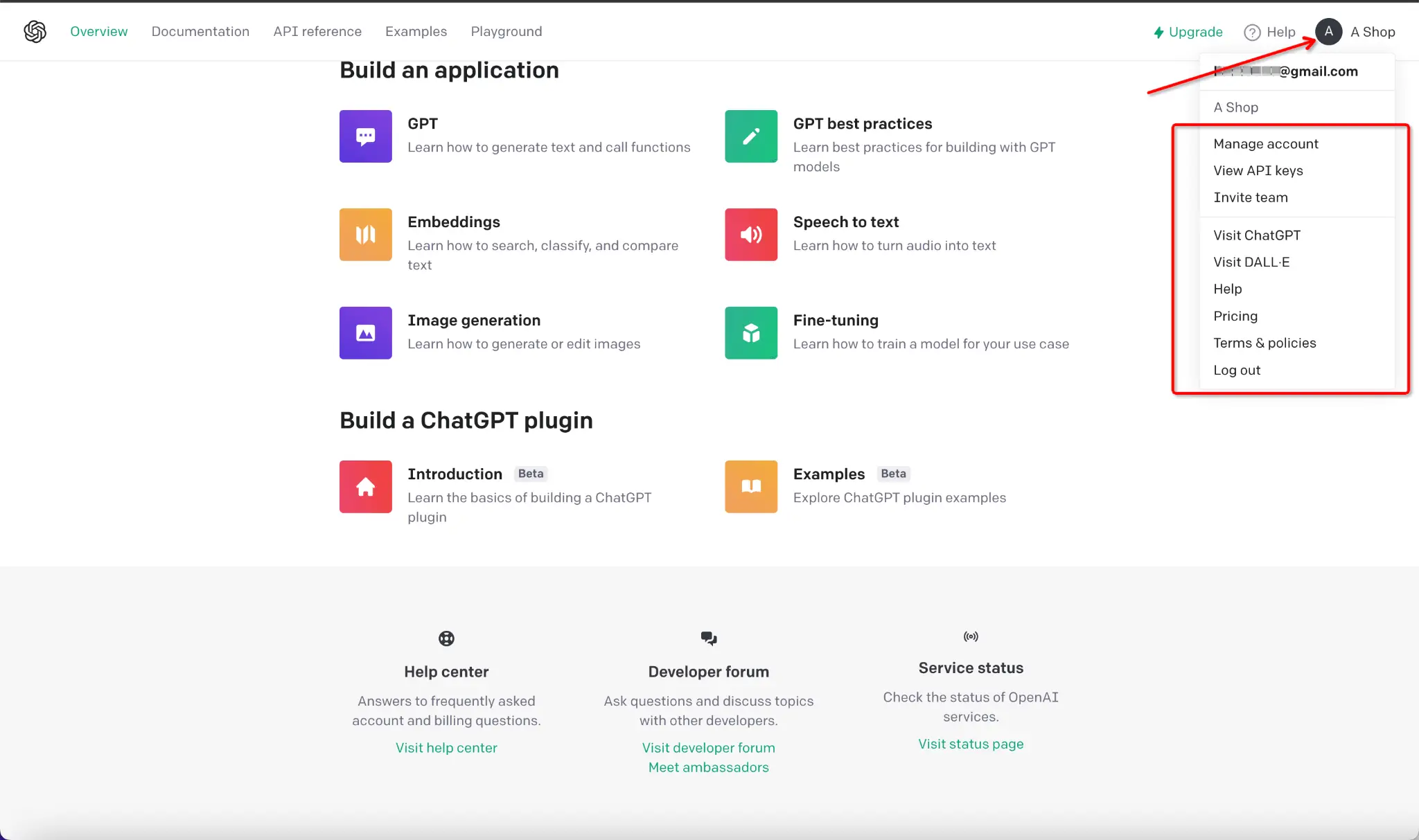Website | https://chat.openai.com/ |
|---|---|
Founded | November 2022 |
GPT | GPT-3.5 & GPT-4 |
API | ChatGPT API |
Type | Autoregressive, Transformer, Language model |
What if a computer could converse like a human? Imagine no more; meet ChatGPT! What is ChatGPT, you ask? It's an AI with an uncanny knack for language, blurring the lines between human and machine interaction. If you're intrigued by this next-level communication technology, read on! Our exploration into the captivating world of ChatGPT begins now.

What is ChatGPT and How Does it Work?
Overview of ChatGPT
ChatGPT is an AI chatbot released by OpenAI in November 2022.
This AI chatbot showcases remarkable natural language processing capabilities that enable human-like conversational abilities.
Users can have surprisingly fluid written conversations with ChatGPT, posing questions on any topic and receiving coherent responses. It can also respond to textual prompts with lengthy passages in a relevant writing style.
Just two months after its release, ChatGPT garnered over 100 million users, becoming the fastest-growing consumer application in history.
While imperfect, ChatGPT's human-like exchange of knowledge and ideas provides a glimpse into the future landscape of digital assistants and content creation tools augmented by AI.
How ChatGPT Works: The Technology Behind the Chatbot
ChatGPT is powered by a technology known as Natural Language Processing (NLP). Think of NLP as a way to help computers understand and speak human languages.
The secret behind ChatGPT's "brain" is neural networks, specifically a kind called a transformer. These are computer systems inspired by how our brains work. They are good at dealing with lots of information, especially when that information is like a long conversation or a book. That's why they're perfect for making ChatGPT talk so well.
OpenAI has a series of GPTs, which stands for Generative Pretrained Transformer. Before it can chat with you, GPT needs to learn from lots of text data from the internet. Imagine reading hundreds of billions of words! That's like reading all the books in a giant library.
For example, the GPT-3 model learned from hundreds of billions of words, soaking up examples of how people use language. By doing this, ChatGPT learns how people use language and can generate similar language.
Based on this foundation, then they will train GPT in two steps.
The first step is supervised learning, which is like school homework. The AI is given questions (inputs) and the correct answers (outputs) and learns how to get from the question to the correct answer.
The other step is reinforcement learning. This method is more like a game - the AI gets points (reinforcement) for good responses and learns to get more points over time. This helps the model improve over time, aligning its responses more closely with what humans prefer.
Thanks to this two-step training, ChatGPT is excellent at understanding what you're asking, maintaining a conversation, and giving relevant and safe responses. The blend of learning from tons of text data and fine-tuning based on human feedback makes ChatGPT a handy chatbot.
How to Log In to ChatGPT
ChatGPT is readily accessible to the public through several channels. The most direct way is via the chat.openai.com website, where users can sign up for an OpenAI account and start querying the chatbot.
Steps for Accessing ChatGPT and Getting Started
Getting started with ChatGPT is straightforward for most users. The main steps are:
Visit chat.openai.com or install the OpenAI mobile app from your device's app store.
Click "Log In." Then enter your email and password.

Note: If you don't have an account, you need to Create a free OpenAI account by providing your email address and setting up a secure password.
Access the chat interface and agree to the content policy to proceed.
Start a conversation: You can type a message into the text box at the interface's bottom.

Then press Enter or click on the Send button to communicate your message, and ChatGPT will generate a response that will appear above your message.
Note:
● You can rate the quality of responses by using the upvote and downvote buttons next to each AI response. This helps improve the system.
● For an enhanced experience with benefits like faster response times, you can upgrade to ChatGPT Plus.
● On the website, ChatGPT will remember the context of the conversation, so you can keep chatting naturally.
To get the most out of it, frame prompts, ask follow-up questions, and guide the dialogue. Verify any factual claims, as mistakes are possible. With experimentation, you can uncover use cases tailored to your needs.
For convenience, OpenAI also provides mobile apps for iOS and Android that contain ChatGPT's conversational interface. This brings advanced AI capabilities to users' fingertips on their smartphones. You can use full ChatGPT features on mobile apps with chat history synced across devices.
What Can You Do With ChatGPT?
Regarding practical activities, ChatGPT's conversational nature makes it well-suited for question-answering and automated customer service. Its text generation capabilities enable uses like drafting written content, translating text, summarizing long-form content, and creative writing.
In short, with the proper instructions, ChatGPT can be helpful in many applications, including:
Writing drafts, articles, and emails
Translating text between languages
Summarizing content
Answering questions
Brainstorming ideas and solutions
Writing computer code

ChatGPT API
OpenAI offers tiered API pricing plans based on usage volume, making ChatGPT accessible to developers and companies of all sizes. The API documentation and tools provided by OpenAI allow rapid prototyping with ChatGPT.
Developers can integrate ChatGPT into their apps and products for more advanced use cases using OpenAI's API (application programming interface). The API allows sending text to ChatGPT and receiving generated responses programmatically.

Third-party Services
ChatGPT is also available through third-party services. For example, Snapchat provides an AI chatbot powered by a custom version of ChatGPT for its paid subscribers.
Microsoft integrated an enhanced version of ChatGPT into its Bing search engine. This effectively gives Bing conversational abilities on top of its traditional search functions.
While impressive, ChatGPT's lack of reasoning and potential inaccuracies mean users should carefully guide it and verify its responses for more advanced subject matter. Testing and oversight help unlock its capabilities while avoiding pitfalls.
ChatGPT's Limitations
ChatGPT also has severe limitations rooted in its underlying machine-learning methodology. As a statistical model trained on online texts, it has yet to have a real conception of truth or understanding of the world. Therefore, you will find that it often generates plausible-sounding but false or nonsensical claims, known as "hallucinations."
More fundamentally, ChatGPT lacks human reasoning, critical thinking, and common sense. As we know, ChatGPT gave responses based on pattern recognition in its training data rather than genuine comprehension. Additionally, its current database is as of 2021, rendering it incapable of providing current events and up-to-date information.
These factors make ChatGPT risky for sensitive applications like medical, legal, or financial advice. Harmful misinformation could be authoritatively presented. ChatGPT cannot objectively discern the accuracy or wisdom of its outputs.
While ChatGPT marks significant progress for AI, users should carefully guide it and verify its statements. Letting it ramble freely can lead it to fabricate facts, give bad advice, or make logical errors. Using ChatGPT safely and ethically will require vigilance as the technology continues advancing rapidly.
ChatGPT Alternatives
ChatGPT gained viral fame as a conversational AI. However, it is not the only advanced chatbot available. Tech giants, including Google, Microsoft, Facebook, and Baidu, have all introduced rivals demonstrating impressive text generation abilities.
Google's Bard chatbot taps into the company's vast search index, potentially accessing more up-to-date information than ChatGPT. However, Bard remains in limited testing as of early 2023.
Microsoft turbocharged its Bing search engine with an integrated ChatGPT-style chatbot. This grants Bing conversational abilities on top of traditional web search. Early tests suggest Bing's chat function may outperform ChatGPT in some regards.
Facebook and Baidu have showcased experimental chatbots named BlenderBot and Ernie Bot, respectively. These models exhibit skilled text generation, understanding of nuanced topics, and multi-turn conversations. However, they have yet to be available publicly.
Smaller firms are also entering the AI chatbot space. For instance, Claude from Anthropic can converse naturally and deliver helpful information. Its model aims to be harmless, honest, and harmless.
Beyond proprietary corporate chatbots, there are open-source alternatives like Anthropic's Constitutional AI and Hugging Face's BigScience project. These provide transparency and control compared to closed models like ChatGPT.
As more advanced conversational AI emerges from big tech and startups, users will enjoy an expanding array of options. Each chatbot has unique strengths and weaknesses, providing opportunities to find the right fit for specific needs and preferences.
The Future of ChatGPT and AI
ChatGPT's prowess also raises challenging questions. Concerns over misuse for generating misinformation, plagiarism, and programming malware exist. Its capabilities could accelerate automation and alter how humans obtain information and skills. These societal impacts have sparked debate about regulating and ethically guiding robust AI systems.
As one of the most advanced AI systems yet available to the public, ChatGPT provides a glimpse into the future possibilities of artificial intelligence. Its conversational abilities, while imperfect, far surpass previous chatbots.
Rapid improvement of systems like ChatGPT is expected in the coming years as researchers apply more computing power, data, and algorithmic innovations. For example, each new version of OpenAI's GPT model has demonstrated major leaps in proficiency.
Many experts believe ChatGPT represents an inflection point where AI transitions from narrow, goal-oriented use cases to more general and multipurpose applications. Its release triggered fierce competition among tech giants to develop similar chatbots, heralding the rise of generative AI as a core computing platform.
If progress continues apace, AI could gain abilities to synthesize information and reason holistically across domains. Systems like ChatGPT might one day provide helpful assistants that can interpret complex contexts and produce creative solutions for open-ended problems.
However, as AI grows more capable, managing risks becomes critical. Developers should guide the development of artificial intelligence thoughtfully and avoid some crisis events. While we actively embrace the fruits of technological innovation, we also need to use it wisely to co-create a more efficient and creative future. This progress requires a combined technical, ethical, and policy innovation effort.
Conclusion
After reading this, you now clearly understand what ChatGPT is.
ChatGPT and its kindred AI chatbots are still in progress, yet their launch signals a new era of digital assistants. While we must thoughtfully manage the risks, these tools also have immense potential to empower our creativity, productivity, and humanity if steered wisely. Our progress so far is only the tip of the iceberg. It will be exciting as scientists and engineers continue rapidly advancing conversational AI.